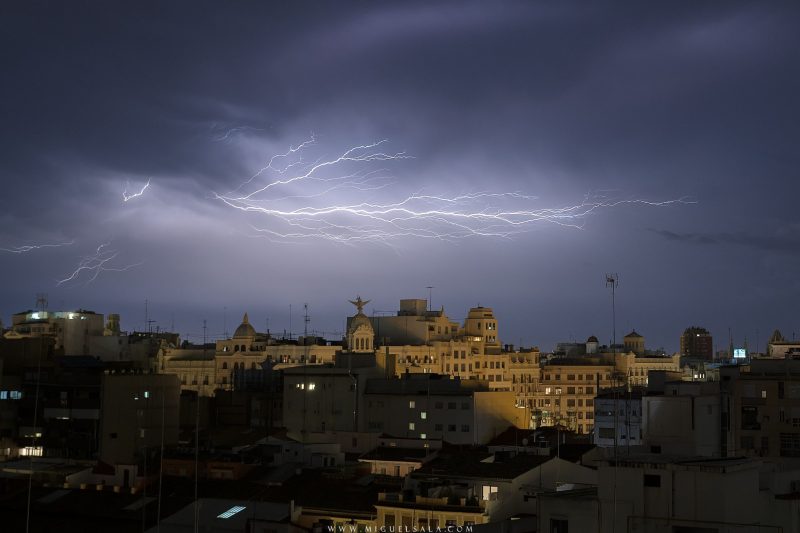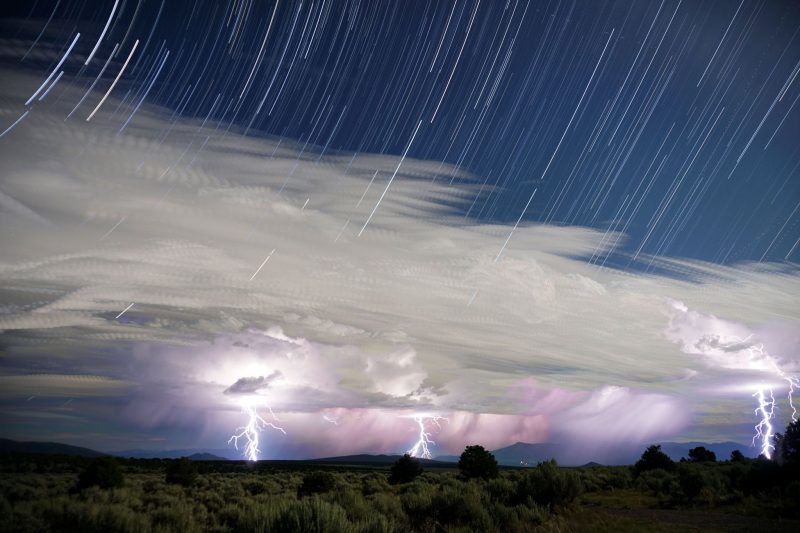
Thunderstorms are unpredictable. They can sometimes intensify fast and produce damaging winds, cloud-to-ground lightning that comes crashing downward, tornadoes, or perhaps flooding. Some people are terrified by loud thunder and lightning, especially at night. It’s the unknown that scares people … and pets. If you fear lightning and thunder, as many children, indoor pets and some adults do, then you (and they) have astraphobia.
The symptoms of astraphobia
PsychCentral.com lists the following as symptoms of astraphobia. They are similar to those of any phobia:
overwhelming fear
anxiety and worry
sweating
tremors or shaking
shortness of breath
heart racing or palpitations
nausea or vomiting
diarrhea
chest pain
dizziness
Additionally, astraphobia can cause someone to want company and reassurance during a storm. They may seek shelter beyond what’s necessary for a thunderstorm. Someone suffering from astraphobia may close the curtains and attempt to block out the sounds of the storm. Or they become obsessed with weather forecasts, wanting to be certain there are no storms near them. Astraphobia can even lead to agoraphobia, the fear of leaving your home.
The fear of storms in animals
According to the Iowa Veterinary Medical Association, thunder and lightning are some of the most common phobias experienced with dogs.
Behaviorists are not yet sure what part of the storm frightens dogs most, whether they’re reacting to lightning flashes, the sound of thunder, wind blowing around the house, or the sound of rain on the roof. Some dogs even start to pace and whine half an hour or more before a storm. They may be reacting to a sudden drop in air pressure or the electrical charge of the air.


Enjoying EarthSky so far? Sign up for our free daily newsletter today!
What is there to be scared of?
Most storms are harmless, even soothing to some, and nurturing to plants and wildlife. Thunder can’t hurt us, of course, but lightning strikes can be deadly. According to the CDC, about 28 people die from lightning per year in the U.S.
There are other weather related deaths. According to the National Weather Service (reported by CBS News), an average of 71 people die in the U.S. every year from tornadoes. And approximately 200 in the U.S. die annually due to flash flooding, according to dps.mn.gov.
However, the deadliest weather phenomenon is heat waves. A recent study suggested that an average of 400 deaths occur annually due to heat in the U.S., with the highest death rates occurring in persons aged 65 years or more.
Still, lightning strikes are deadly, which is why you should go indoors when you hear thunder. The majority of lightning fatalities typically occur in the spring and summer, when there is ample unstable air to create strong updrafts and potent thunderstorms containing dangerous cloud-to-ground lightning.
What’s the treatment for astraphobia?
If your child or pet is afraid, soothe and snuggle them. Being held tightly seems to help some people. In a similar way, some people swear by thundershirts for dogs. But you don’t have to buy an expensive one. Any old tightly wrapped t-shirt for your pet might work just as well. If your child’s fear is severe, or lasts longer than six months, you might want to seek professional treatment so that a childhood fear of storms doesn’t become a full-blown phobia in adulthood.
Bottom line: If your heart starts to race when a thunderstorm comes near, and you want to hide from the thunder and lightning, you might have astraphobia.
The post Astraphobia is a fear of thunder and lightning first appeared on EarthSky.
0 Commentaires